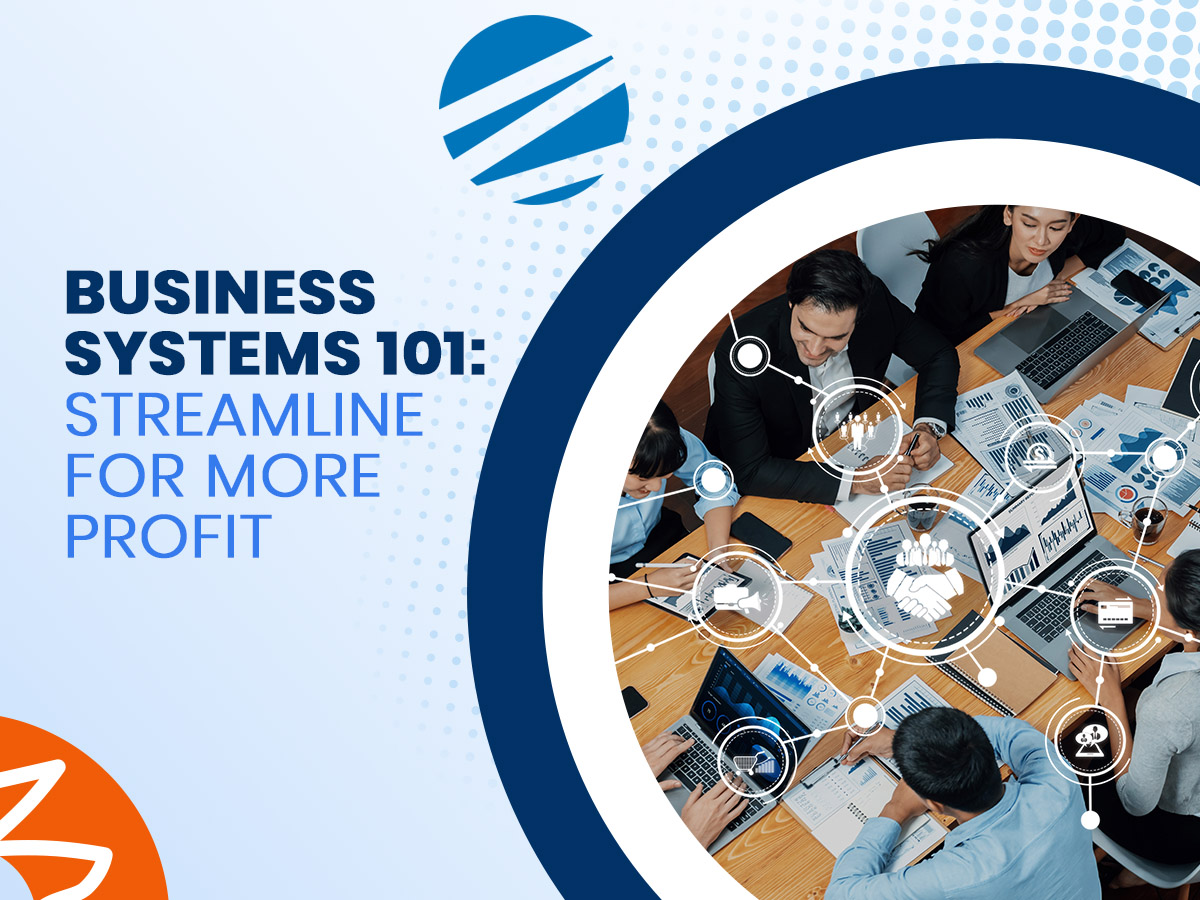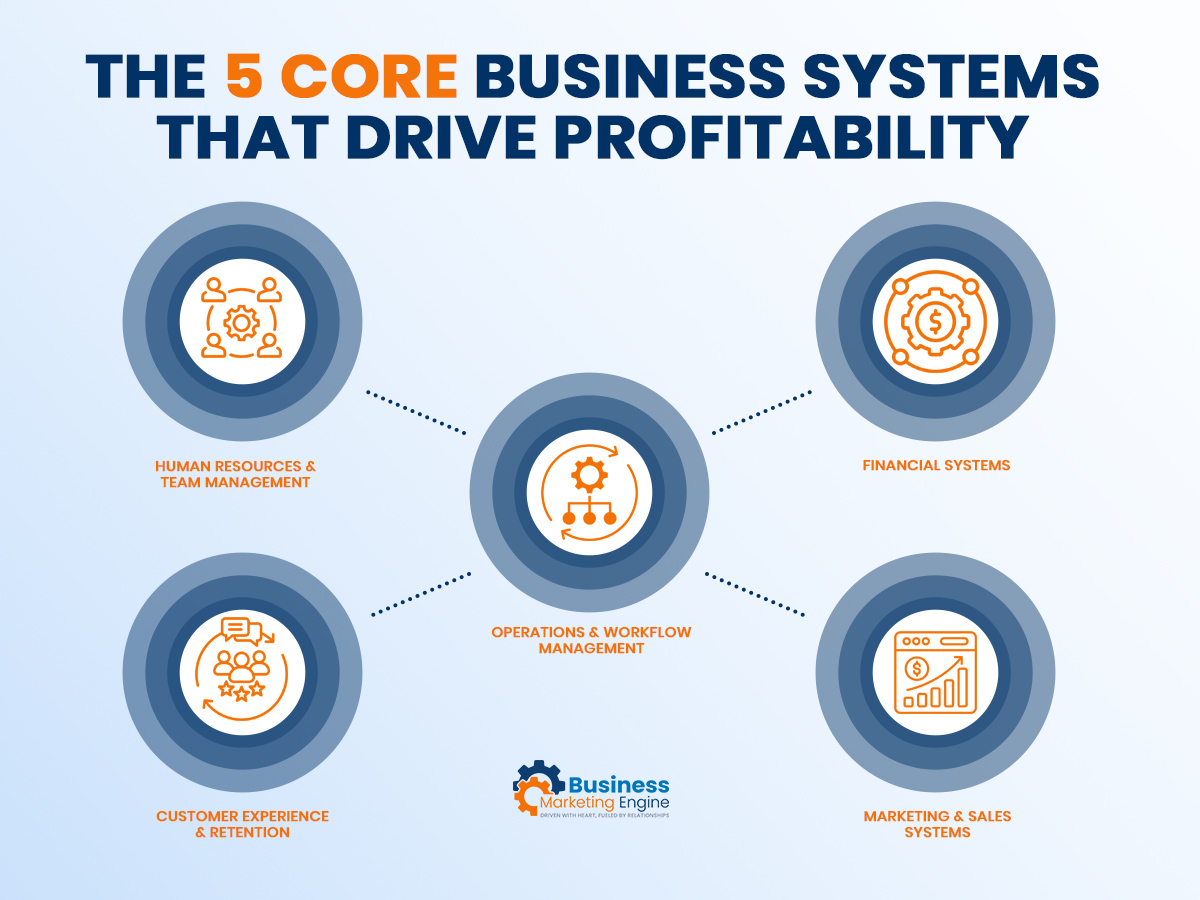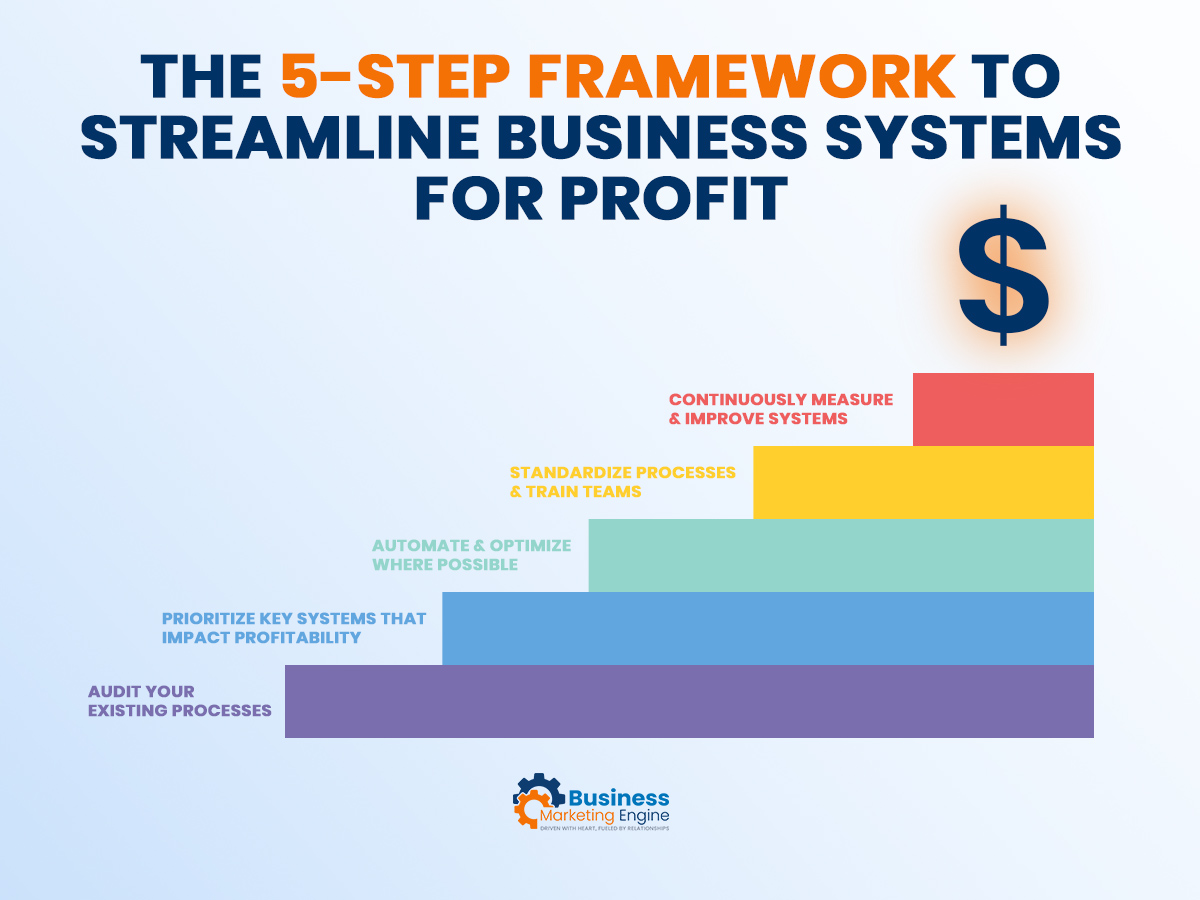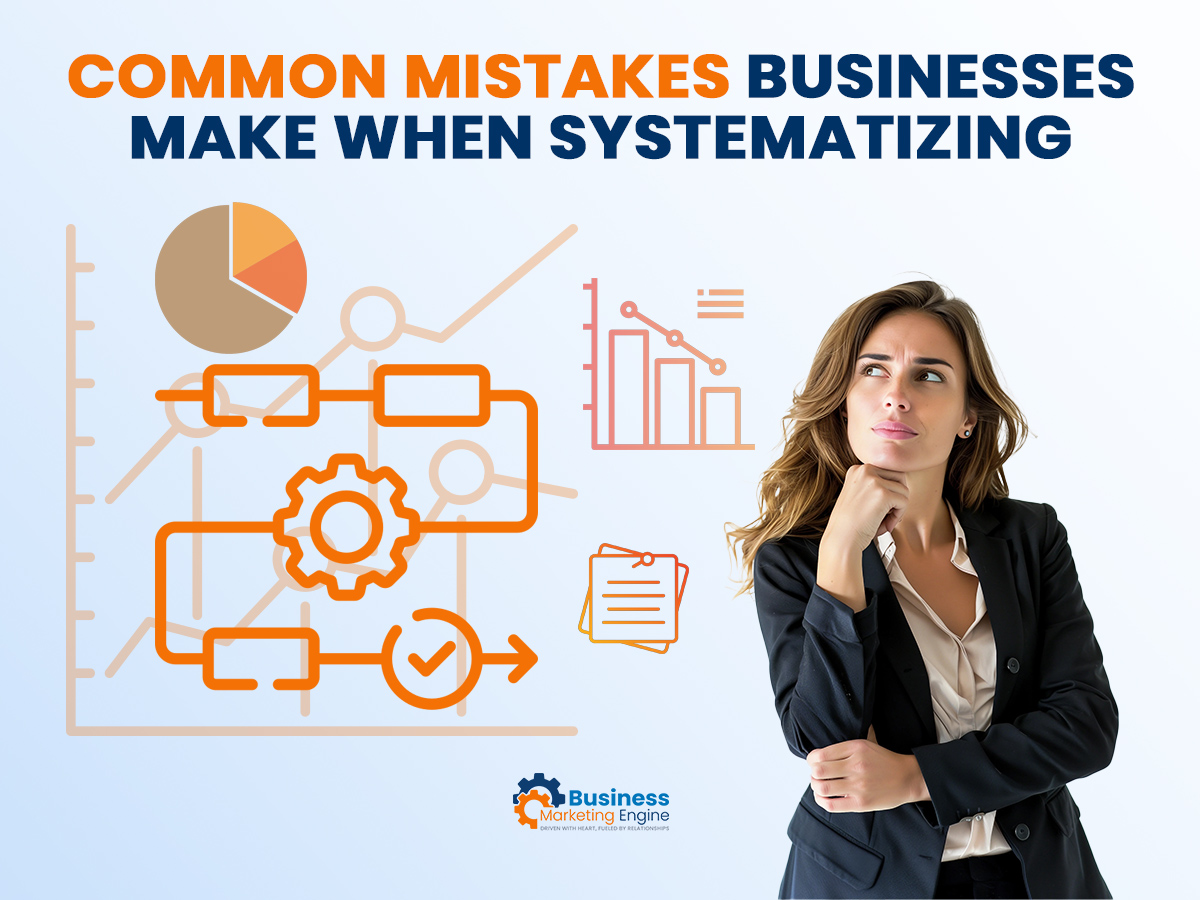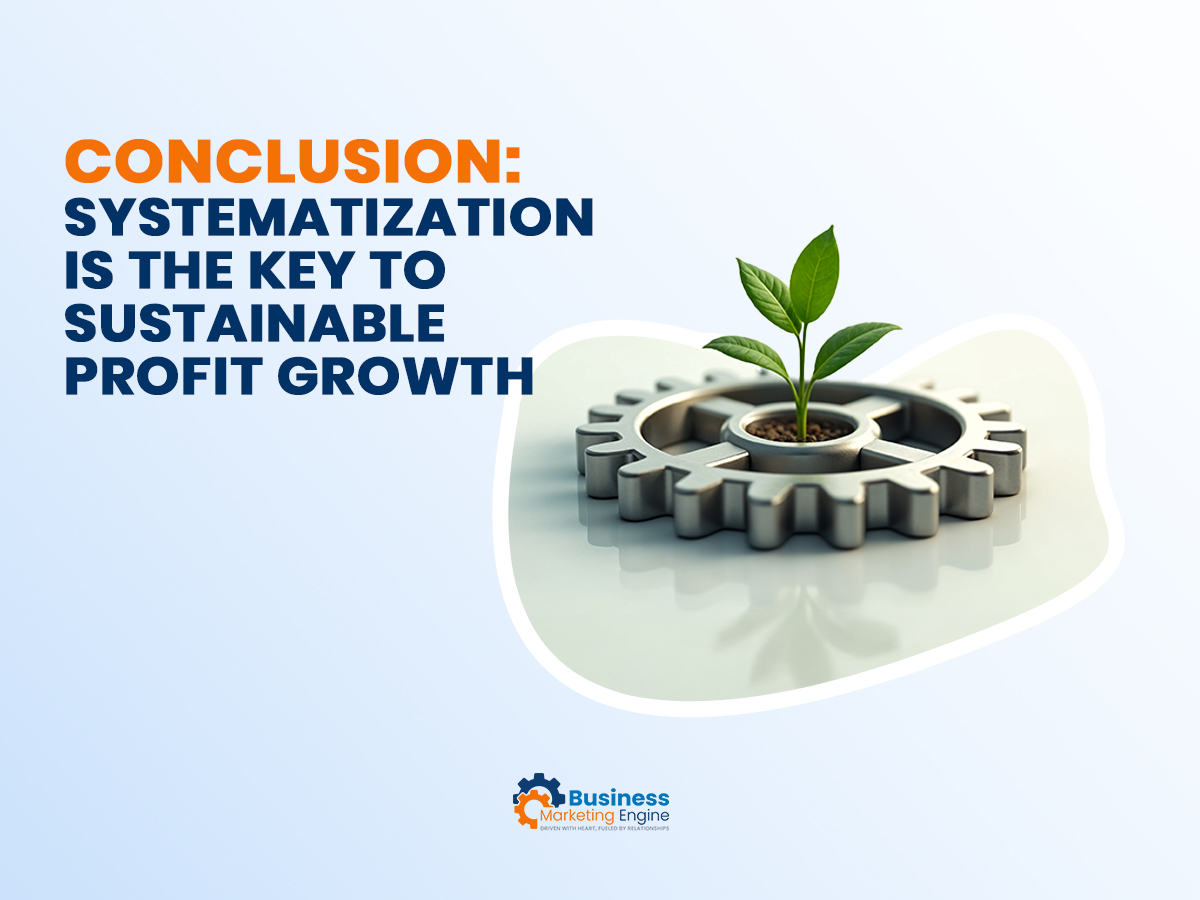Efficient business systems are the backbone of every successful business in 2025.
Think Nike’s streamlined supply chain, Amazon’s optimized logistics, and Google’s efficient data management.
These companies have mastered the art of business systems, allowing them to significantly scale their operations and boost revenue.
From startups to growing enterprises, efficiently designed business systems can cut costs, boost productivity, and fuel sustainable growth.
But what is a business system, and how does it impact your profitability?
Keep reading to learn what a business system is, core systems every company needs, and actionable steps to streamline operations.
What is a Business System?
A business system is a set of processes, procedures, and tools that organizations use to accomplish specific goals efficiently.
These systems ensure consistency, scalability, and alignment across teams.
Standard Operating Procedures (SOPs) are an essential part of any well-functioning business system. These detailed, step-by-step guidelines enable employees to complete tasks accurately and consistently. By standardizing even routine activities, SOPs help maintain high-quality outcomes across the board.
For example, customer service SOPs may outline how to handle complaints, ensuring every customer gets the same level of care. A sales SOP may detail the steps for following up with leads, ensuring a consistent and thorough approach.
Overall, SOPs contribute to the overall efficiency and effectiveness of business systems and processes. However, not every business system is completed by humans, especially in the age of automation. In fact, automated systems are increasingly being implemented for a multitude of tasks daily. Here’s a breakdown of the differences:
- Manual systems rely on human effort to perform repetitive tasks, such as bookkeeping or scheduling. While these systems can be straightforward, they consume more time and are prone to human error.
- Automated systems leverage technology to manage tasks with speed and accuracy. For example, an automated payroll system like Gusto not only saves hours of manual work but also minimizes mistakes.
No matter how you choose to implement systems in your business, their importance cannot be overstated. Creating systems for your business may seem like an overwhelming task, but the benefits are well worth the effort.
The 5 Core Business Systems That Drive Profitability
If your daily business operations are feeling more chaotic than seamless, here are five essential systems to prioritize:
1. Operations & Workflow Management
Operations and workflow management systems control the flow of work and ensure tasks are completed efficiently.
- Key Areas: Inventory control, logistics, supply chain optimization.
- Tools: Leveraging platforms like Monday.com for project management or ShipBob for logistics can transform how teams collaborate and execute.
- Results: Increased alignment between teams and clients and improved time management.
Pro Tip: Set up automated workflows to delegate tasks and receive progress updates in real-time.
2. Financial Systems
Business revenue systems control your company’s finances, including accounting, budgeting, and cash flow management.
- Key Areas: Invoicing, expense tracking, and financial reporting.
- Tools: QuickBooks or FreshBooks are popular options for managing accounting processes. Tools like Mint or Expensify can help track expenses and create reports easily.
- Results: Better financial management and organization, improved decision-making based on accurate financial data.
Pro Tip: Implement automated expense tracking to eliminate hours of manual data entry.
3. Marketing & Sales Systems
Marketing and sales systems help attract, engage, and convert leads into loyal customers.
- Key Areas: CRM (Customer Relationship Management), sales funnels, lead capture forms, and email automation.
- Tools: Platforms like HubSpot, Salesforce, and Google Analytics provide valuable insights to elevate marketing campaigns.
- Results: Increased lead generation, improved customer retention and satisfaction, streamlined sales processes.
Pro Tip: Use CRM tools to track leads and automate custom follow-ups alongside sales calls to close deals faster.
4. Human Resources & Team Management
People are your most valuable asset, and efficient HR systems help empower your team while reducing admin overhead.
- Key Areas: Employee scheduling, payroll, benefits, and performance tracking.
- Tools: BambooHR and Gusto simplify payroll, while platforms like Monday.com or Asana help organize team collaboration.
- Results: Improved employee satisfaction, higher productivity and efficiency, reduced turnover rates.
Pro Tip: Introduce employee surveys or self assessments to identify and resolve workplace challenges or growth opportunities proactively.
5. Customer Experience & Retention
Customer-centric systems help you track feedback, streamline onboarding, and reward long-term loyalty.
- Key Areas: Client onboarding, feedback collection, loyalty programs.
- Tools: Zendesk, AI-driven chatbots, and live chat services ensure customers feel supported and valued.
- Results: Increased customer retention, positive reviews and referrals, improved brand reputation.
Pro Tip: Use customer feedback systematically to improve services and identify upsell opportunities.
A successful business management system should align with the company’s values and goals. Take the time to research and implement solutions that will work best for your specific situation.
Ignore trending tools and tactics that do not fit your brand image or target audience. What matters most is finding a system that achieves your objectives, whether it’s streamlining internal processes or enhancing customer experience.
How Business Systems Directly Impact Revenue Growth
Well-designed business systems don’t just make your life easier—they directly impact your bottom line. By optimizing resources and focusing efforts on what makes money, you can achieve significant revenue growth.
How Poor Systems Lead to Revenue Loss
Disorganized, outdated, or inefficient systems drain your profits in several ways:
- Human Error: Manual data entry mistakes can cost businesses thousands annually.
- Redundant Work: Without automation, employees spend unnecessary time on repetitive tasks.
- Miscommunication: Poor processes lead to confusion, project delays, and dissatisfied customers.
The Profitability Formula: Better Systems = More Revenue
Clear, powerful systems amplify productivity and reduce costs. For instance:
- An e-commerce platform that uses inventory tracking can prevent stock shortages, ensuring smooth, more consistent sales.
- A business using content management systems like Metricool can schedule posts, manage comments, and track data to save time.
- A company using project management tools like Asana can improve team communication and increase efficiency, resulting in faster project completion.
In today’s fast-paced business world, having well-organized and efficient systems is crucial for success. Outdated or inefficient systems can drain your profits in several ways, impacting your bottom line. This is why it’s important to continually evaluate and improve your processes.
One of the main ways these systems affect profitability is through human error. Manual data entry mistakes may seem small at first, but they can add up quickly and cost businesses thousands of dollars annually. These errors not only cause financial losses but also take up valuable time as employees have to go back and fix them.
The 5-Step Framework to Streamline Business Systems for Profit
Here’s how to take control of your processes and systems for laser-focused profitability:
Step 1 – Audit Your Existing Processes
Identify inefficiencies by conducting a thorough business system analysis:
- What bottlenecks slow down your workflows?
- Are there repetitive manual tasks that could be automated?
- Are there any existing processes that need to be updated or are no longer relevant?
Pro Tip: Gather feedback from your team to uncover hidden pain points. Your employees are the ones working with these systems day in and day out, so their insights are invaluable.
Step 2 – Prioritize Key Systems That Impact Profitability
Not all systems deserve the same attention. Start with areas that immediately affect revenue, such as customer retention or reducing operating costs.
Pro Tip: Avoid focusing too much on flashy tools without addressing critical weaknesses in current processes. There are new tools that launch every single day. Not every tool will be the right fit for your organization. Prioritize and invest in systems that have a clear impact on profitability.
Step 3 – Automate & Optimize Where Possible
Automating repetitive tasks like invoicing, email marketing, or inventory updates drastically reduces errors and frees up time for high-value activities.
Pro Tip: Choose tools that integrate easily with your existing software, such as Zapier.
Step 4 – Standardize Processes & Train Teams
Use SOPs to document workflows effectively and keep them accessible in a shared drive or platform for easy reference.Then, train your employees thoroughly so processes are followed consistently.
Pro Tip: SOPs don’t always have to be formal documents. Videos, checklists, and even infographics can be effective training tools.
Step 5 – Continuously Measure & Improve Systems
Business needs evolve, and so should your systems. Use KPIs like customer retention rates or process cycle times to measure success.
Pro Tip: Review systems quarterly to make necessary adjustments before inefficiencies compound.
Common Mistakes Businesses Make When Systematizing
Avoid these common pitfalls during your business system overhaul:
Overcomplicating Processes
Too many steps, tools, or approvals create confusion and lead to compliance fatigue. Ask yourself: Is this the simplest way to get the job done?
Failing to Adapt to Change
Business landscapes shift, and so should your systems. Flexibility is key for sustaining long-term success.
Ignoring Employee & Customer Feedback
Employees and customers are your systems’ end-users. Not listening to them means missing valuable improvements. Occasionally ask your employees and customers for feedback verbally or using an online survey. Be sure to ask specific questions to gather actionable insights.
Conclusion: Systematization is the Key to Sustainable Profit Growth
Creating robust business systems may feel overwhelming, but the benefits far outweigh the initial effort. By auditing your processes, focusing on high-impact areas, and automating tasks, you can significantly boost productivity, reduce inefficiencies, and increase profits.
Want to streamline your business systems but don’t know where to start? Schedule a consultation with Business Marketing Engine. From social media management and email automation to data tracking and analysis, we can optimize your operations for long-term success.
Click here to learn more about our services, or connect with a business growth specialist to discuss your specific needs.
